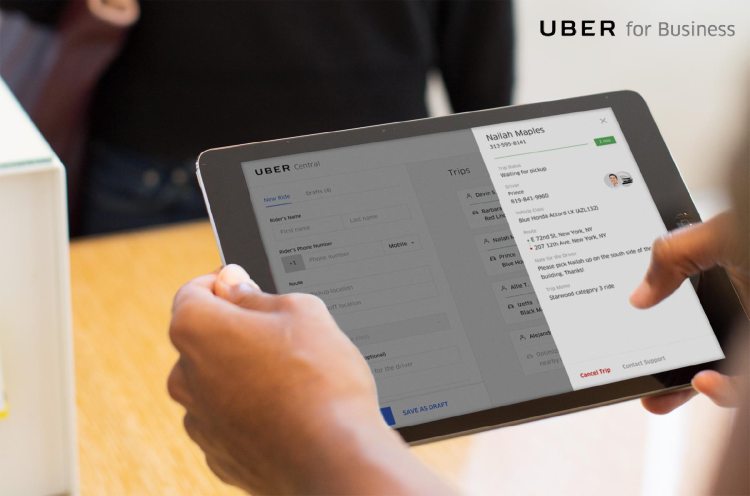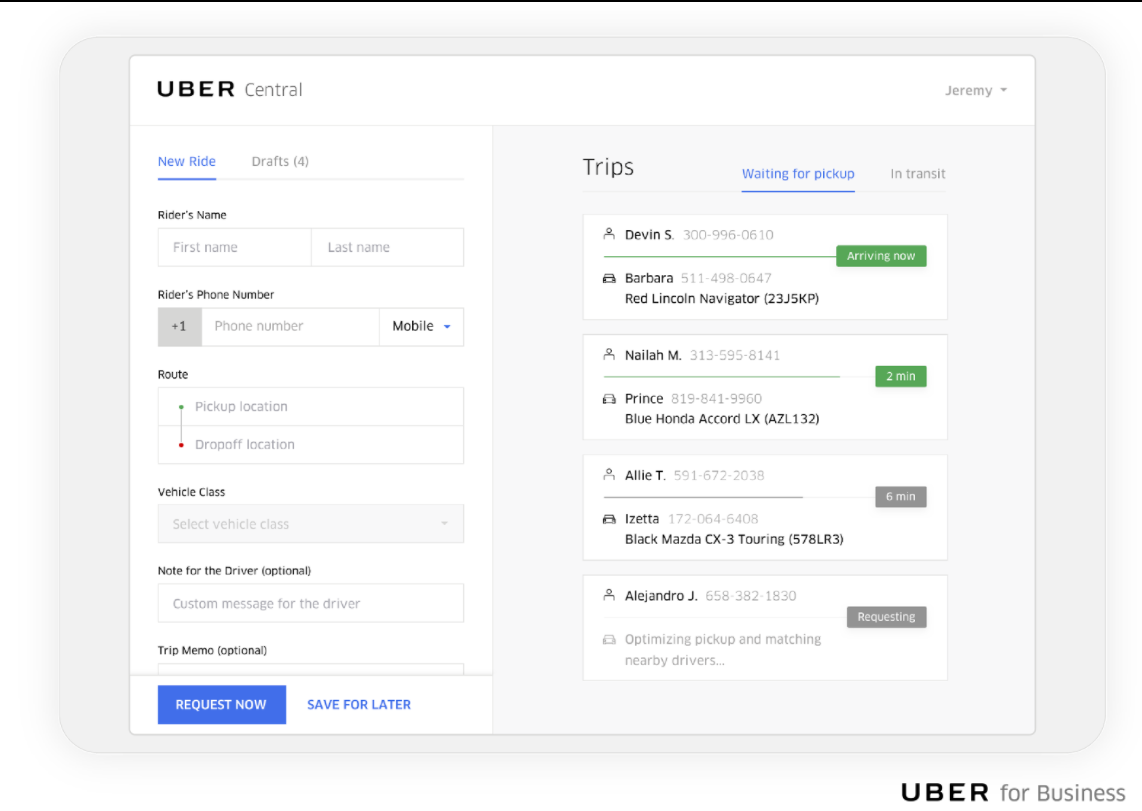Uber is expanding its solution for businesses with the launch of a service called Uber Central that enables companies to act as dispatch operators for their customers. This shifts the focus away from standard business travel toward giving a company whatever it needs for the first and last mile, something that Uber has been dedicated to providing.
Built on top of Uber for Business, the feature lets companies now provide a customer service differentiator with an on-demand chauffeur service. Uber Central not only lets an administrator request rides for pick up and drop off, it includes the ability to manage billing and reporting for multiple people. This is meant for companies with client services in such areas as retirement homes, hotels and hostels, car dealerships, restaurants, airports, and bars.
Previously, if the need arose, an employee could use the Uber app to have a car pick up their client or customer. “Businesses would buy all the phones, connect to Uber, and give them to customers to use. It’s not what Uber for Business was built for, but it’s interesting to see and is why Uber Central was built,” said Greg Grenier, Uber’s head of product.
June 5th: The AI Audit in NYC
Join us next week in NYC to engage with top executive leaders, delving into strategies for auditing AI models to ensure fairness, optimal performance, and ethical compliance across diverse organizations. Secure your attendance for this exclusive invite-only event.
The rider doesn’t need to have Uber installed on their phone, as the process is handled through SMS. When a business makes a ride request, the rider will get a text message that an Uber is on its way, followed by another one with the driver’s information, along with a link. Tapping on the link will pull up a map that can track the location of the vehicle.
At the end of the ride, the rider gets out and goes about their day. The business will receive the receipt and can process it themselves.
Uber has also provided a dashboard that companies can set up with the names of customers who need rides, along with their phone numbers, the route, the vehicle class, notes for the driver, and a trip memo (such as a room number, customer ID, and more). These trips can be saved for multiple uses, like a template. Previous trips can also be reviewed.
Since this is the first iteration of Uber Central, the company hasn’t established any policy regarding price markups. Travis Bogard, Uber’s global general manager, said that is currently left up to the company. However, the on-demand ride-hailing service takes a 10 percent commission.
More than 65,000 companies currently use Uber for Business, which had been focused on shuttling employees to and from meetings through a similar dashboard. With Uber Central, the company is now expanding to cater to business-to-business-to-customer. At least 8,000 companies participated in the pilot program.
Uber Central’s launch comes more than a month after Lyft launched a service that bears some similarities, giving developers the ability to use a white-labeled version of the ride-hailing service.


